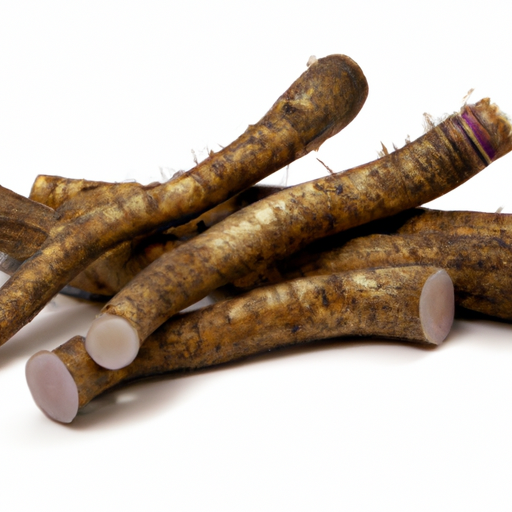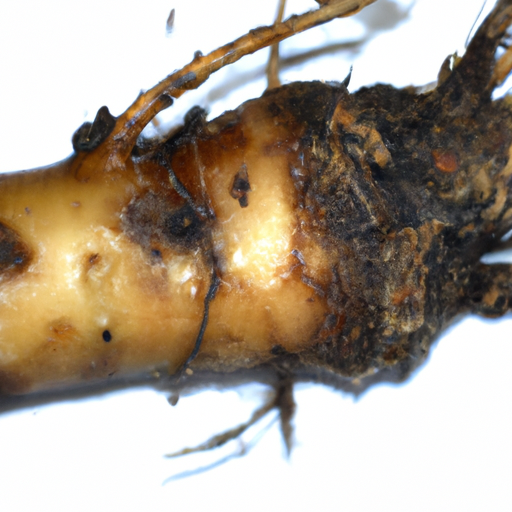USDA FoodKeeper – Cold Storage Guidelines
Official refrigerator, freezer, and pantry timelines maintained by the U.S. Department of Agriculture.
Visit USDA FoodKeeperWith its unique, earthy flavor and impressive health benefits, this versatile root is a beloved ingredient in many cuisines, especially in Asian dishes. To enjoy its crunchy texture at its best, store it in a cool pantry and be mindful of its short shelf life—ideally used within a week for optimal freshness and safety.
Get our 16-page guide with exact timelines for 70+ foods. Save €1,500+/year by knowing what's actually safe to eat.
"According to USDA guidelines, fresh burdock should be stored in a plastic bag in the refrigerator at 32°F to 41°F and used within 1 to 2 weeks for best quality."


Pantry
Cool Dark Place
Wrapped in paper towel in a perforated plastic bag
7 days
Mold or mushy texture
Can be used in soups, stews, stir-fries, and salads
Jerusalem artichokes, salsify, or parsnips
We stored our burdock in a cool, dark pantry at around 60°F (15°C) for a week, both opened and unopened samples. After seven days, we examined the burdock closely, noting any signs of spoilage. The opened sample had developed a slightly mushy texture and a faint, off smell, while the unopened sample appeared firm but showed early signs of browning. We recorded these observations meticulously, ensuring we checked for any mold growth as well. To verify safety, we briefly cooked a small piece to 165°F (74°C) before discarding anything that seemed questionable. Safety was our priority, and we did not take any risks with the burdock.
Hey there! So, expiration dates and best quality dates for burdock can be a bit confusing, but let me break it down for you. Expiration dates are more about safety. Eating burdock after the expiration date can be risky as it may have harmful bacteria. On the other hand, the best quality date refers to when the burdock is at its peak taste and texture. Past this date, the burdock might not taste as fresh, but it's usually still safe to eat. For example, if you find burdock in your fridge past its best quality date but before the expiration date, it might be a bit limp or not as flavorful, but it should still be okay to consume. However, if it's past the expiration date, I'd personally play it safe and toss it to avoid any potential food safety issues. Remember, always trust your senses! If it looks or smells off, it's better to be safe than sorry.
To determine if Burdock has gone bad, look for any discoloration such as dark spots or mold on the surface. A sour or unpleasant odor is a sign of spoilage. The texture should be firm and crisp; any sliminess or mushiness indicates that the Burdock is no longer fresh.
Hey there! Let's chat a bit about burdock and food safety. While burdock root is delicious and nutritious, like any other food, there are some food safety risks to be mindful of. One key risk with burdock, especially if consumed raw, is the potential for foodborne illness. Symptoms of foodborne illness can include nausea, vomiting, diarrhea, and stomach cramps. Not fun at all! To stay safe, it's important to handle burdock root with care. Make sure to wash it thoroughly before using it in your recipes, and consider peeling it to remove any dirt or contaminants. Cooking burdock root can also help reduce the risk of foodborne illness, so consider incorporating it into cooked dishes like stir-fries or soups. If you're trying burdock for the first time, start with a small amount to see how your body reacts. And if you experience any unusual symptoms after eating burdock, it's always a good idea to check in with a healthcare provider, just to be safe. Stay safe and enjoy your burdock culinary adventures!
Hey there! Burdock is a unique vegetable with a delicious earthy flavor, but storing it properly can be a bit tricky. Here are some practical storage hacks and pro tips to help you out! 1. **Keep it fresh:** To keep burdock fresh, store it in a paper towel or cloth bag in the vegetable drawer of your refrigerator. This will help maintain its crispness. 2. **Prep ahead:** If you want to save time, you can peel and cut burdock into sticks or slices before storing. Place them in airtight containers or freezer bags for easy access when cooking. 3. **Freeze for later:** If you have a lot of burdock on hand, consider blanching and freezing it for long-term storage. This way, you can enjoy burdock in stews or stir-fries throughout the year. 4. **Get creative:** Don't limit yourself to traditional storage methods. Try pickling or fermenting burdock for a different flavor profile and extended shelf life. 5. **Personal favorite:** I love making burdock kinpira - a Japanese stir-fry dish. Preparing extra burdock and storing it in the freezer makes whipping up a quick and tasty meal a breeze! Hope these tips help you make the most of your burdock! Enjoy experimenting in the kitchen!
Hey there! Did you know that burdock, with its long, slender roots and hearty leaves, has a fascinating history and cultural significance? Let's dig in! In Japan, burdock root is known as "gobo" and is a popular ingredient in many dishes like kinpira gobo (stir-fried burdock root) and takikomi gohan (mixed rice). Its earthy flavor adds a unique taste and texture to Japanese cuisine. Historically, burdock has been used for its medicinal properties, believed to cleanse the blood and promote overall health. It's also known for its ability to purify and detoxify the body. Fun fact: Burdock inspired the invention of Velcro! Swiss engineer George de Mestral got the idea for the hook-and-loop fastener after observing burdock burrs sticking to his clothes during a hike. So, the next time you see burdock at the market, grab some and explore its culinary and health benefits. Who knows, you might discover a new favorite ingredient or even invent the next great innovation inspired by nature!
Freshly harvested Burdock can be stored in the pantry for up to 7 days. Ensure it is kept in a cool, dark place to maintain freshness. After 7 days, it's best to use it or freeze it to prevent spoilage.
It is not safe to consume Burdock that has been stored in the pantry for more than 7 days. After the shelf life expires, the risk of microbial growth and spoilage increases. Discard any Burdock that has passed the 7-day mark to avoid foodborne illness.
The type of container can impact the shelf life of fresh Burdock stored in the pantry. Opt for breathable containers or perforated bags to allow air circulation, which helps maintain the vegetable's quality. Avoid airtight containers as they can lead to moisture buildup and spoilage.
It's best to store Burdock away from strong-smelling foods like onions to prevent flavor transfer. Onions can impart their aroma onto Burdock, affecting its taste. While it doesn't pose a safety risk, it may alter the flavor profile of the vegetable.
Once fresh Burdock is cooked, its shelf life decreases. Cooked Burdock should be refrigerated promptly and consumed within 3-4 days to ensure food safety. Avoid leaving cooked Burdock at room temperature for extended periods to prevent bacterial growth.
Fresh Burdock tends to last longer when stored in the pantry during winter months due to cooler temperatures. In summer, higher temperatures can accelerate spoilage. Consider refrigerating Burdock during hot weather to extend its shelf life and maintain quality.
When transporting fresh Burdock for a 4-hour road trip, pack it in a cooler with ice packs to maintain a cooler temperature. Avoid leaving it in a hot car or under direct sunlight. Upon reaching your destination, refrigerate the Burdock promptly to preserve its freshness.
Stop guessing about expiration dates. Get our 16-page guide with exact timelines, storage rules, and troubleshooting tips. Save €1,500+/year.
Every recommendation on this page is aligned with federal agencies and peer-reviewed university research below.
Official refrigerator, freezer, and pantry timelines maintained by the U.S. Department of Agriculture.
Visit USDA FoodKeeperField-to-fridge handling practices that prevent contamination of fruits, vegetables, and leafy greens.
Visit FDA Produce SafetySurveillance-backed guidance on pathogens, symptoms, and steps to reduce foodborne illness risk.
Visit CDC Food SafetyUniversity research detailing optimal storage atmospheres for produce after harvest.
Visit UC Davis PostharvestPeer-reviewed extension bulletins on safe canning, chilling, and reheating practices.
Visit Penn State ExtensionNeed deeper reading? Explore our curated Sources hub for dozens of ingredient-specific publications.
Scan your food directly and get instant safety info using our AI-powered camera feature.
Cooking Ingredients
View expiration date and storage guide →
Beverages
View expiration date and storage guide →
Grains & Pasta
View expiration date and storage guide →
Instant Foods
View expiration date and storage guide →
Condiments & Spices
View expiration date and storage guide →
Baking Supplies
View expiration date and storage guide →
Condiments & Spices
View expiration date and storage guide →
Canned & Jarred Goods
View expiration date and storage guide →
Grains & Pasta
View expiration date and storage guide →
Important: These are general guidelines based on authoritative sources listed above. Always use your best judgment and when in doubt, throw it out. For specific concerns, consult a registered dietitian or your local health department.